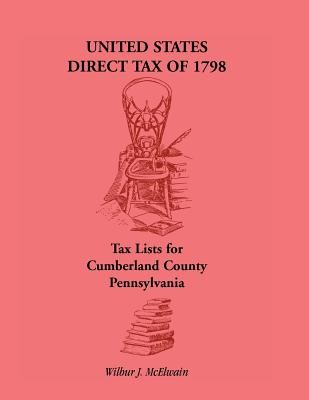
- We will send in 10–14 business days.
- Author: Wilbur J McElwain
- Publisher: Heritage Books
- ISBN-10: 0788401181
- ISBN-13: 9780788401183
- Format: 21.6 x 27.9 x 1.3 cm, minkšti viršeliai
- Language: English
- SAVE -10% with code: EXTRA
United States Direct Tax of 1798 - Tax Lists for Cumberland County, Pennsylvania (e-book) (used book) | bookbook.eu
Reviews
Description
The direct tax of 1798 was imposed by the United States government on dwellings, lands and slaves. To carry out the taxation program, every structure, lot, and tract in the country had to be accounted for in tax listings, in which each was described and given an assessed value. The result was a housing inventory so complete that it has not been surpassed to this day. This book is a compilation of these tax lists for the area of present-day Cumberland County, Pennsylvania. Over 2,000 county properties are listed herein, and approximately 5,000 separate structures are described in these records. An appendix includes reproductions of original tax list forms and related documents, and separate indexes are provided for property owners and for occupants other than owners. Information in the tax lists includes the type of structure, its dimensions, construction material, number of stories, number of windows and window panes, lot size, farm acreage, location, names of adjoining owners and value. Occasionally additional information on the fertility of the land, the state of repair of structures, and other matters appears in comments by the assessors. The nature of the structures (milk house, wheelwright shop, grist mill, still house, and so forth) can provide information on the occupations of avocations of their owners, and it is also sometimes possible to reconstruct a neighborhood by comparing the names of adjoining owners. A treasure-trove of information lies within the data in this extraordinary picture of eighteenth-century society.
EXTRA 10 % discount with code: EXTRA
The promotion ends in 21d.14:52:01
The discount code is valid when purchasing from 10 €. Discounts do not stack.
- Author: Wilbur J McElwain
- Publisher: Heritage Books
- ISBN-10: 0788401181
- ISBN-13: 9780788401183
- Format: 21.6 x 27.9 x 1.3 cm, minkšti viršeliai
- Language: English English
The direct tax of 1798 was imposed by the United States government on dwellings, lands and slaves. To carry out the taxation program, every structure, lot, and tract in the country had to be accounted for in tax listings, in which each was described and given an assessed value. The result was a housing inventory so complete that it has not been surpassed to this day. This book is a compilation of these tax lists for the area of present-day Cumberland County, Pennsylvania. Over 2,000 county properties are listed herein, and approximately 5,000 separate structures are described in these records. An appendix includes reproductions of original tax list forms and related documents, and separate indexes are provided for property owners and for occupants other than owners. Information in the tax lists includes the type of structure, its dimensions, construction material, number of stories, number of windows and window panes, lot size, farm acreage, location, names of adjoining owners and value. Occasionally additional information on the fertility of the land, the state of repair of structures, and other matters appears in comments by the assessors. The nature of the structures (milk house, wheelwright shop, grist mill, still house, and so forth) can provide information on the occupations of avocations of their owners, and it is also sometimes possible to reconstruct a neighborhood by comparing the names of adjoining owners. A treasure-trove of information lies within the data in this extraordinary picture of eighteenth-century society.


Reviews